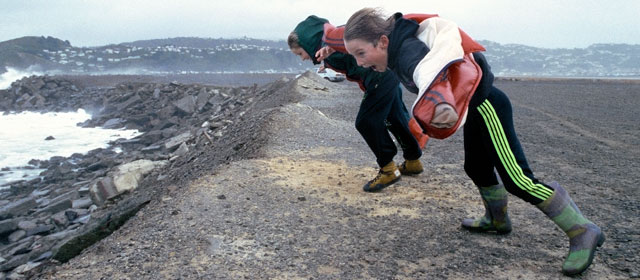Story summary
The weather is the day-to-day conditions, such as rain, snow, wind or sunshine. This is different from climate, which is the pattern of conditions over a long period. New Zealand’s weather is shaped by wind, sea and land.
Wind
New Zealand is a windy place because it lies in the roaring forties weather system.
- Westerly winds are common. They mainly bring wet weather to the west and dry weather to the east.
- Northerlies often bring heavy rain.
- Southerlies sometimes carry cold Antarctic air.
- Easterlies can bring rain or dry conditions.
Sea
The air that reaches New Zealand travels over thousands of kilometres of ocean. The sea cools air from the tropics, and heats air from Antarctica. As air flows over the ocean it gathers moisture.
Land: the mountains
New Zealand’s weather is affected by the mountains and the wind that flows over and around them. When north-west winds reach the West Coast and the Southern Alps, they rise up over the mountains. As the air rises it cools, causing clouds to form. They drop lots of rain on the West Coast and the mountains. The air then passes over to the east coast. It has no moisture left, so it brings dry, warm weather to Canterbury and Otago, on the eastern side of the mountains.
Tropical cyclones
Tropical cyclones that form in the tropics usually get weaker as they travel over cooler sea to New Zealand. Sometimes a cyclone brings gales and heavy rain, which cause floods and great damage. The worst was in 1936. A river in Northland rose 19 metres. There were slips and washouts, a train was derailed, boats sank and hundreds of thousands of trees blew over.
Thunderstorms
Thunderstorms build when warm air near the land or sea surface is quickly pushed up into cold air higher up. As the air gets higher and colder, the water turns to ice crystals. These produce electricity, in the form of lightning. Lightning happens mostly in the west of the South Island, and is common in summer.
Floods and tornadoes
Thunderstorms can produce huge downpours of rain. Streams and rivers may rise rapidly – sometimes in just a few minutes.
Tornadoes form when air is pulled into a thunderstorm cloud. It becomes a spinning funnel of air that stretches down to the ground. The worst tornado in New Zealand was in Frankton and Hamilton in 1948. It destroyed 150 houses, killed three people and injured many others.





